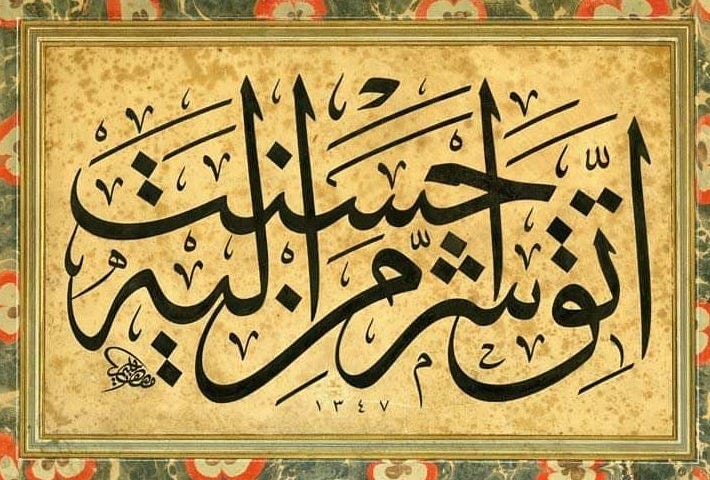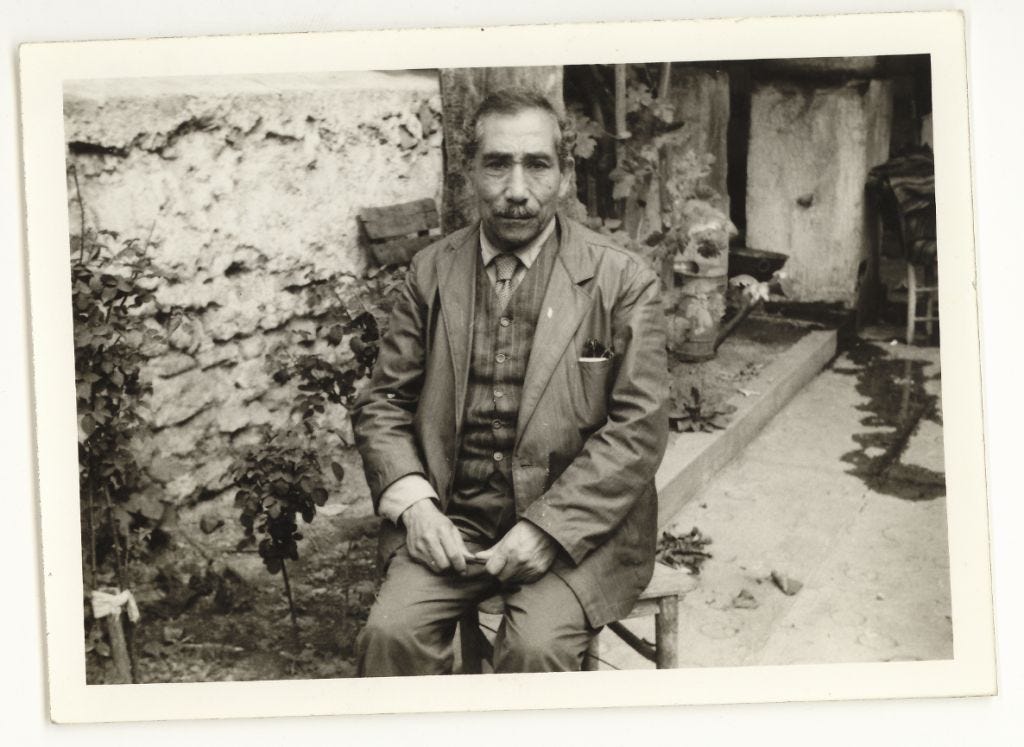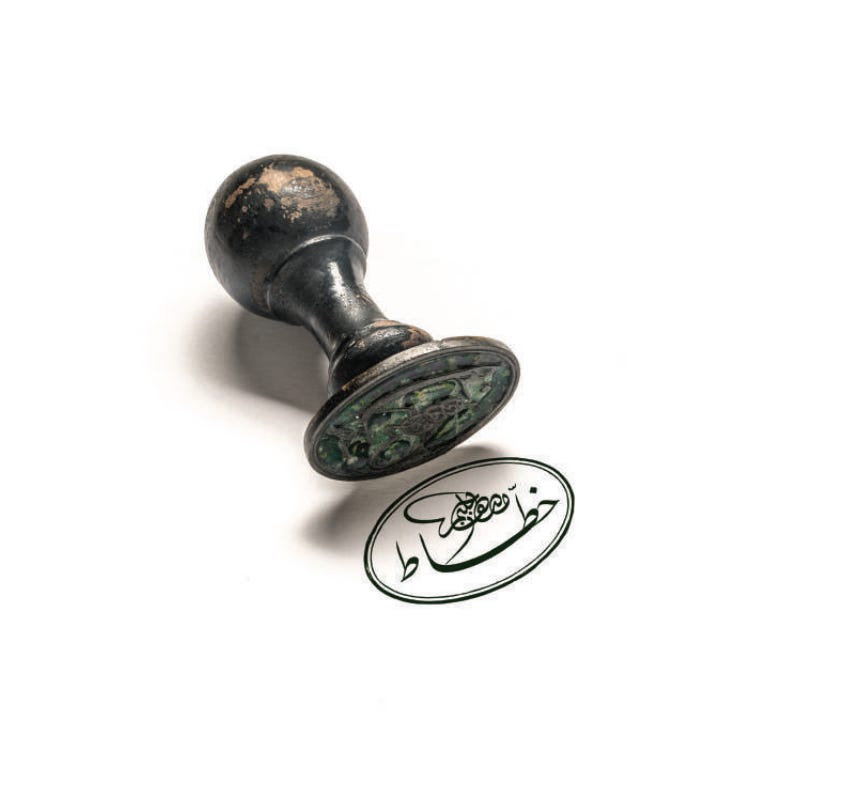Introduction
In the second part of our series on Mustafa Halim Ozyazici, we explore his monumental contributions to the art of calligraphy during the latter half of his career. As Turkey underwent significant cultural shifts, Halim remained a steadfast guardian of its calligraphic heritage, adapting his skills to meet the demands of the time and mentoring the next generation of artists.
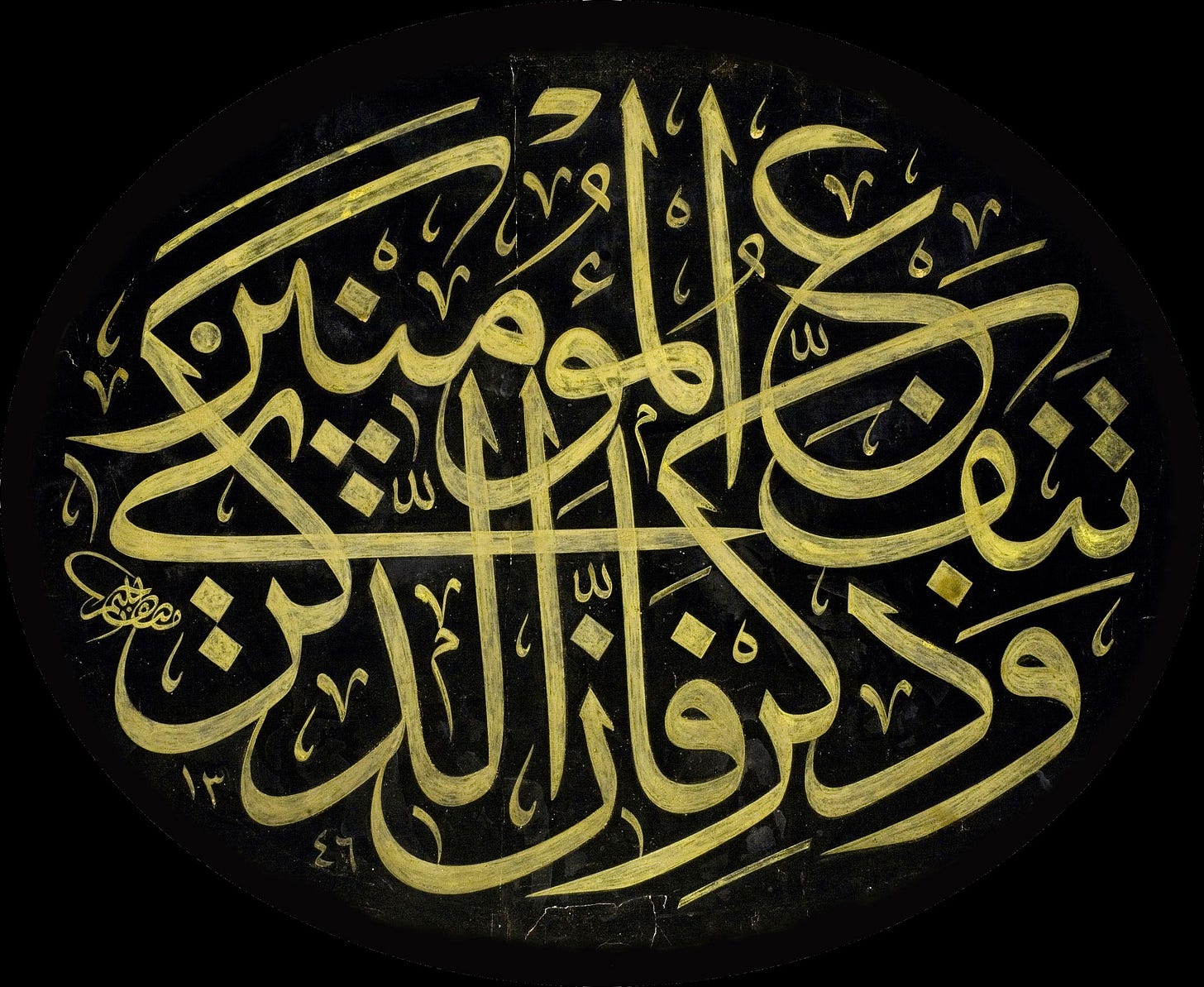
Master of Restoration
The 1930s and 1940s were a period of significant cultural preservation in Turkey, and Halim was at the forefront of restoring ancient calligraphic works. He was involved in several high-profile projects, including restoring calligraphy in historic mosques such as the Yavuz Selim Mosque and Beyoğlu Ağa Mosque. His work not only preserved the artistic integrity of these cultural landmarks but also reinstated the spiritual and historical narratives they carried.
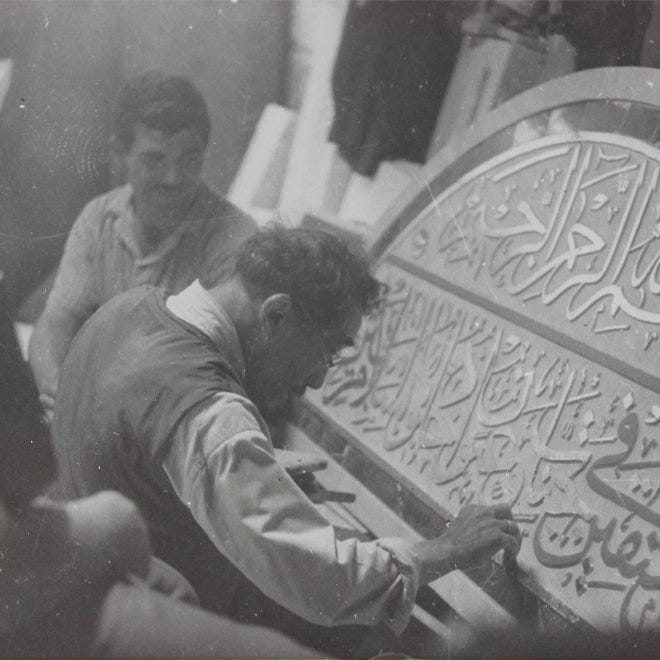
Academic Contributions
In 1946, Halim’s mastery of calligraphy led to his appointment as a calligraphy instructor at the State Academy of Fine Arts. Here, he impacted a diverse group of students, imparting the technical skills and philosophical underpinnings of the calligraphic arts. Though strict in his standards, his teaching style was influential in shaping the perspectives of many young calligraphers, although few could claim to have received his formal endorsement.
Late Career and Innovations
Despite the sweeping changes brought about by the alphabet reform, Halim continued to innovate within the realm of calligraphy. He was known for his unique ability to scale calligraphic scripts directly, a method that set him apart from his contemporaries. His work included not only traditional texts but also the inscriptions for new monuments and the diplomas of Istanbul University, showcasing the versatility and enduring relevance of his craft.

Legacy and Final Days
Mustafa Halim Ozyazici passed away on September 30, 1964, after a traffic accident. His burial at Kozlu Cemetery marked the end of an era for Turkish calligraphy. However, his legacy lives on through his monumental works and the students who continue to draw inspiration from his life.

Halim Özyazıcı faced a period of unemployment due to the marginalization and prohibition of calligraphy in the new Republic era following the Alphabet Reform. During this time, he began cultivating grapes in the Tepebağ district near Topkapı. He signed his works during this period with the annotation, "formerly a calligrapher, currently a gardener.
Conclusion
Mustafa Halim Ozyazici’s story is about resilience and adaptability in the face of changing times. His dedication to the art of calligraphy not only preserved a significant part of Turkey’s cultural heritage but ensured its continuation into the modern era. As we reflect on his life and work, we are reminded of the power of art to transcend generations, serving as a bridge between the past and the future.






